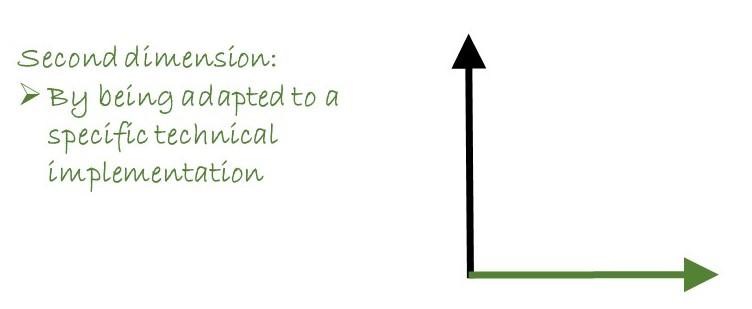Non-technical features of an AI invention can contribute to the technical character in connection with a technical implementation of the claimed subject matter which is shown in the following.
Second dimension
With respect to the second dimension (of the two dimension acc. to chapter (1)), a mathematical method may also contribute to the technical character of the invention independently of any technical application when:
- the claim is directed to a specific technical implementation of the mathematical method and
- the mathematical method is particularly adapted for that implementation in that its design is motivated by technical considerations of the internal functioning of the computer system or network (T 1358/09, G 1/19), please see also CII @ the EPO, chapter (7).

Specific technical implementation
Specific technical implementation may happen if the mathematical method is designed to exploit particular technical properties of the technical system on which it is implemented to bring about a technical effect such as efficient use of computer storage capacity or network bandwidth.
For instance, the adaptation of a polynomial reduction algorithm to exploit wordsize shifts matched to the word size of the computer hardware is based on such technical considerations and can contribute to producing the technical effect of an efficient hardware implementation of said algorithm.
Another example is assigning the execution of data-intensive training steps of a machine-learning algorithm to a graphical processing unit (GPU) and preparatory steps to a standard central processing unit (CPU) to take advantage of the parallel architecture of the computing platform. The claim should be directed to the implementation of the steps on the GPU and CPU for this mathematical method to contribute to the technical character.
Usually not sufficient
The following are generally insufficient for AI and ML methods to contribute to the technical character of the invention:
- generic technical implementation,
- mere programming, or
- abstract algorithm merely more efficient than in prior art.
